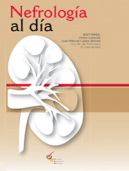Sodium-glucose co-transporter-2 inhibitors (SGLT2i) and aldosterone inhibitors show promise for treating chronic kidney disease (CKD). This systematic review and meta-analysis explored the efficacy and safety of aldosterone inhibitors plus SGLT2i combination compared to their effects. We searched PubMed, Scopus, Web of Science, Cochrane Central Register of Controlled Trials [CENTRAL], and EBSCOhost. We reported dichotomous outcomes as pooled relative ratios and continuous outcomes as standardized mean differences with a 95% confidence interval. Three studies were included in this meta-analysis. The combination therapy was associated with a significantly higher rate of 30% reduction of urine albumin creatinine ratio (UACR) compared to SGLT2i (RR=2.38, 95% CI, 1.46: 3.46, P< 0.001; I2= 0%, P=0.54) and compared to MRA (RR=1.34, 95% CI, 1.12: 1.60, P= 0.001; I2= 13%, P=0.28). It also showed a significant reduction in the UACR compared to SGLT2i (SMD=-1.47, 95% CI, -2.25: -0.68, P= 0.0003; I2= 78%, P=0.03) but no significant reduction compared to aldosterone inhibitors (SMD=-0.10, 95% CI, 0.38: 0.19, P= 0.51; I2= 67%, P=0.05). The pooled data showed no significant difference in the incidence of serious adverse events between the combination therapy and SGLT2i (RR=1.01, 95% CI, 0.72-1.41, P=0.96; I²=0%, P=0.58) or MRA (RR=1.01, 95% CI, 0.79-1.30, P=0.92; I²=0%, P=0.90). In conclusion, combining SGLT-2i and aldosterone inhibitors may offer a promising approach for managing albuminuria and potentially slowing kidney disease progression in CKD patients.
We registered the protocol in PROSPERO CRD42024511675.






